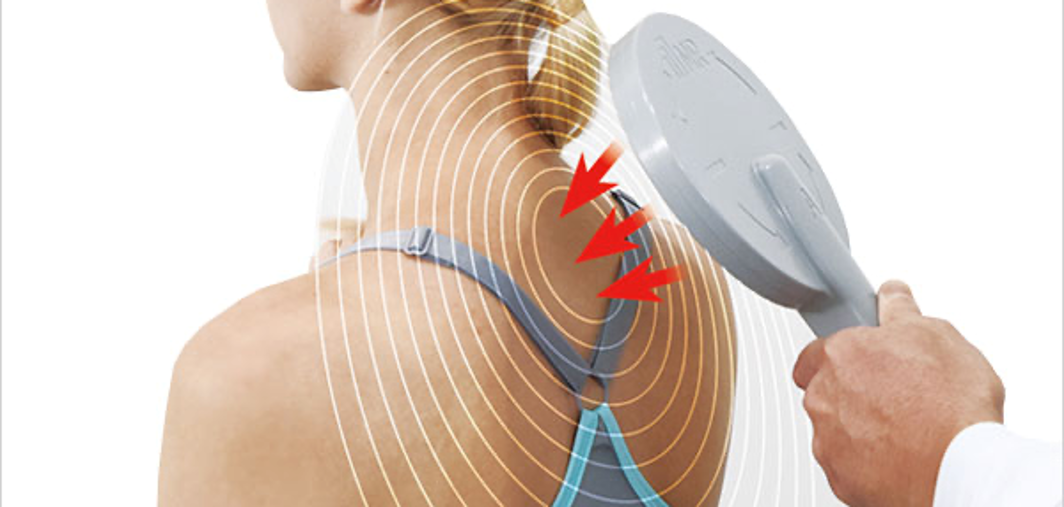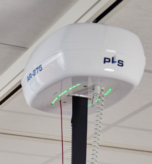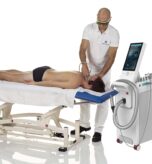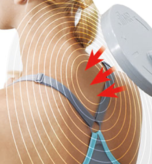1.0 Introduction
Super Inductive Stimulation (SIS) or Peripheral Magnetic Stimulation (PMS) is a non-invasive technique used in physiotherapy and rehabilitation settings. It employs rapidly pulsed magnetic fields to stimulate nerves and muscles, offering an alternative to traditional electrical stimulation for neurological and musculoskeletal conditions. It is utilized in various conditions including:
- Acute and Chronic Pains
- Muscle Strengthening
- Incontinence Management
- Spasticity or Tone reduction
- Non-Healing Fractures
2.0 Historical Background
Magnetism has been applied for therapeutic purposes for centuries, with its modern scientific application beginning with Michael Faraday’s 1831 discovery of electromagnetic induction. This principle, where a time-varying current induces a magnetic field that can stimulate another current in nearby tissues, underpins magnetic stimulation technologies. In the 1960s, Kolin and colleagues demonstrated nerve activation using alternating magnetic fields in animal studies. The first practical magnetic peripheral stimulator for human use was developed in 1982 at the University of Sheffield, which employed higher peak magnetic field strengths to target peripheral nerves more effectively (Kalinowska et al., 2018).

3.0 How Super Inductive Stimulation (SIS) Works?
SIS operates by delivering rapidly changing magnetic fields to the body using an external coil. These fields induce electric currents in the underlying tissues, capable of depolarizing neural membranes and eliciting motor responses. Unlike traditional electrical stimulation, SIS penetrates deeper tissues without causing discomfort associated with surface electrodes or skin resistance, making it effective for targeting deep nerve and muscle structures with minimal patient discomfort.
4.0 Clinical Applications of SIS
4.1 Muscle Strengthening
SIS is a modality for strengthening muscle fibers due to its wide range of available frequencies. Its depth of penetration allows stimulation of deep-seated muscle fibers. Combining SIS with resistive exercise facilitates faster recovery and effective results.
4.2 Neurological Rehabilitation
SIS supports neural recovery in individuals with central nervous system injuries, such as stroke, by enhancing neuroplasticity and facilitating reactivation of motor pathways. Studies have indicated improvements in voluntary movement, motor control, and gait in post-stroke patients (Beaulieu & Schneider, 2015).
4.3 Pain Management
SIS has shown effectiveness in managing chronic and neuropathic pain conditions. By modulating sensory input and inhibiting pain transmission at the spinal cord level, PMS can reduce pain perception in conditions such as musculoskeletal pain, post-surgical pain, and phantom limb pain.
4.4 Pelvic Floor Dysfunction
SIS is validated for managing urinary incontinence and pelvic floor weakness. By stimulating pelvic floor muscles and the pudendal nerve, SIS can restore muscle tone and improve bladder control without invasive procedures (Vodušek, 2017).
4.5 Spasticity Reduction
SIS is effective in reducing muscle spasticity in patients with conditions such as cerebral palsy or spinal cord injury. It temporarily reduces hypertonicity, making muscles more amenable to stretching and functional training.
5.0 Advantages Over Traditional Electrical Stimulation
SIS offers several advantages, particularly in clinical comfort and treatment efficacy:
- Deeper Penetration: Magnetic fields reach deeper nerves and muscles more effectively.
- Greater Comfort: Patients often prefer SIS due to the absence of tingling or burning sensations caused by surface electrodes.
- Reduced Skin Irritation: SIS does not require direct skin contact, reducing the risk of burns or irritation.
- More Natural Muscle Contractions: SIS produces smoother, more physiological muscle activation patterns.
6.0 Safety and Contraindications
While SIS is considered safe, certain precautions must be observed. Contraindications include:
- Implanted electronic devices (e.g., pacemakers, defibrillators)
- Metallic implants that conducts electricity near the treatment area
- Pregnancy (precautionary)
- Epilepsy (relative contraindication)
It is essential to thoroughly screen patients and follow device-specific safety protocols.
7.0 Future Outlook
Research on SIS is expanding rapidly and is being investigated for applications such as:
- Enhancing neuroplasticity during motor learning
- Improving sensorimotor integration
- Combining with robotic and virtual reality systems in neurorehabilitation
As more evidence emerges, SIS may become integral to modern physiotherapy and occupational therapy practices, especially for difficult-to-treat neurological or chronic pain conditions.
8.0 References
- Kalinowska, M. et al. (2018). Peripheral Magnetic Stimulation. StatPearls Publishing. NCBI Bookshelf
- Beaulieu, L. D., & Schneider, C. (2015). Repetitive peripheral magnetic stimulation to improve sensorimotor function of upper limbs in post-stroke patients. NeuroRehabilitation, 36(1), 33-42.
- Vodušek, D. B. (2017). Pelvic floor disorders and neurostimulation. Handbook of Clinical Neurology, 142, 337-349.






